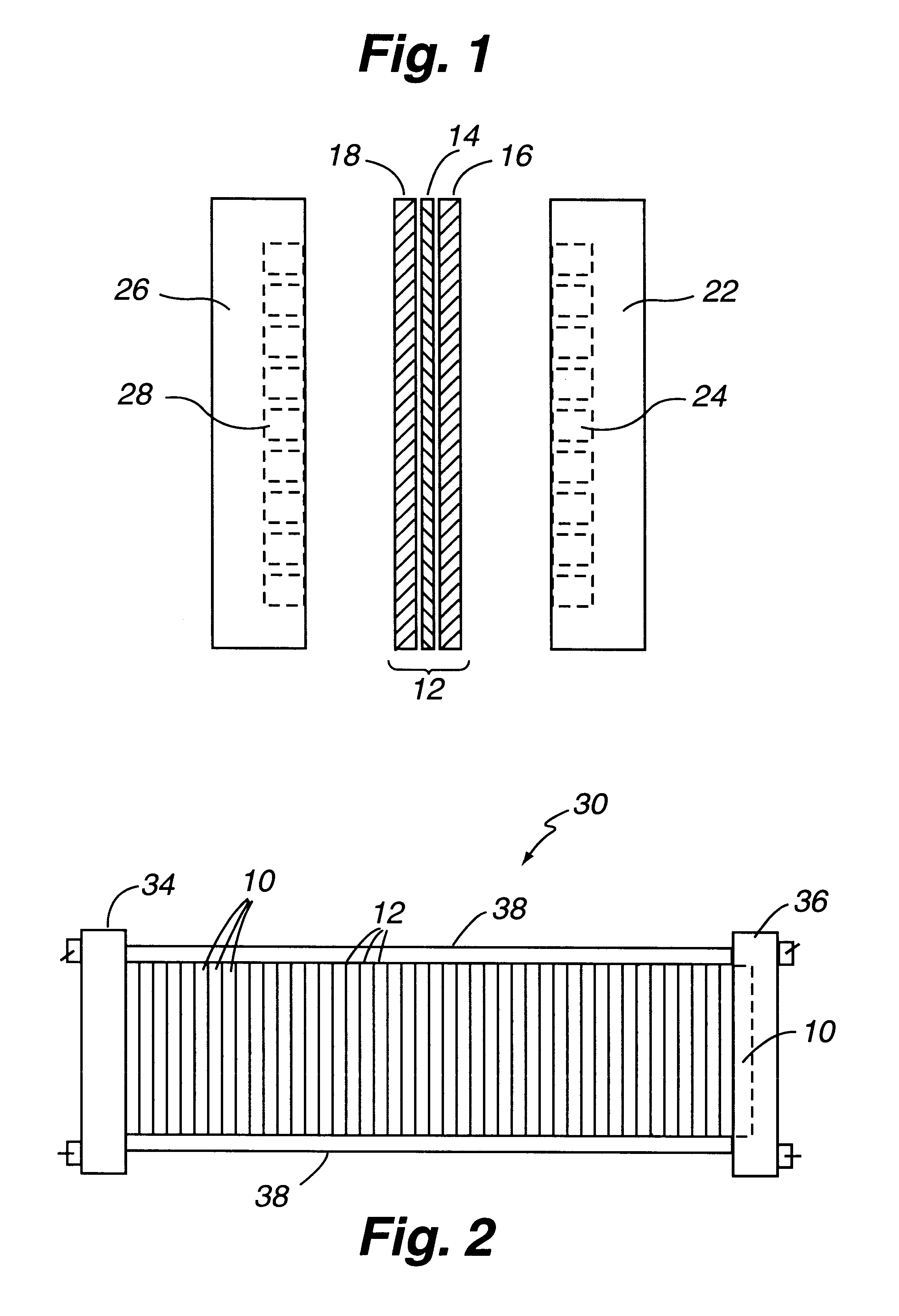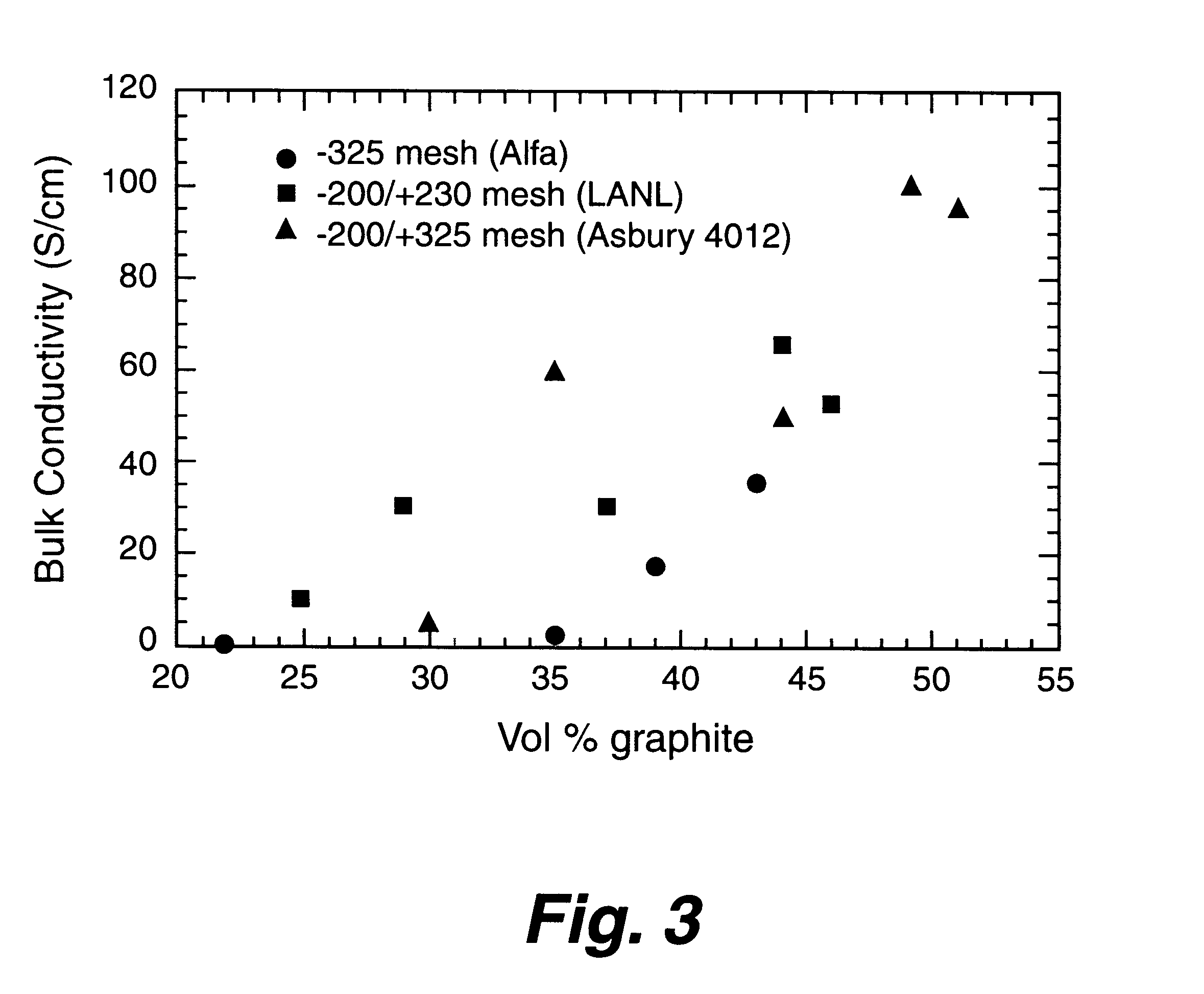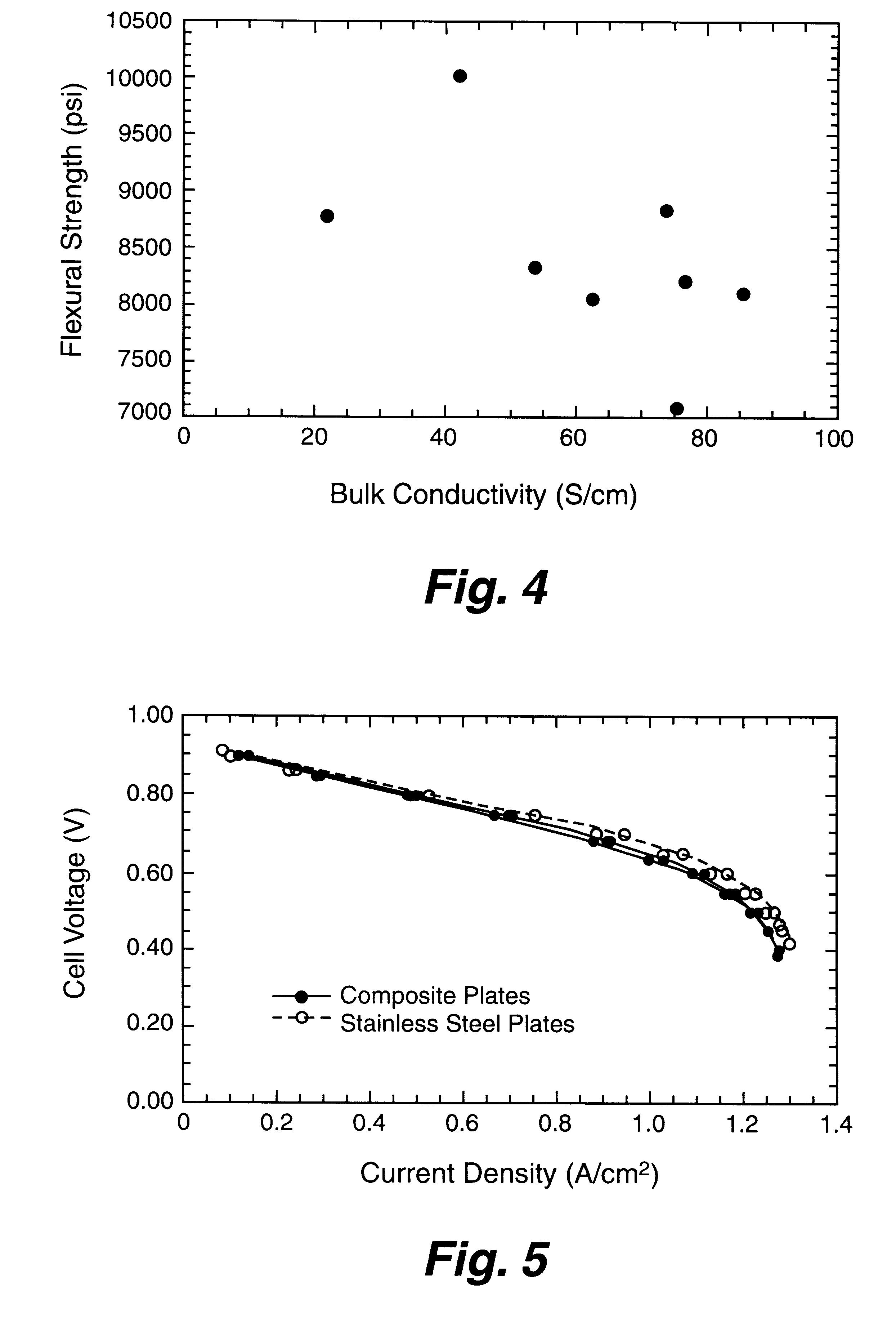Composite bipolar plate for electrochemical cells
a technology of bipolar plates and composite materials, which is applied in the direction of cell components, cell grouping, cell component details, etc., can solve the problems of resin prepromotion, short pot life (shelf life) of catalyzed vinyl ester resins, and polyester esters outperform both polyesters and epoxies in toughness (elongation) and corrosion resistan
- Summary
- Abstract
- Description
- Claims
- Application Information
AI Technical Summary
Problems solved by technology
Method used
Image
Examples
Embodiment Construction
Small-scale Samples
A number of small scale (1 inch diameter) non-reinforced samples were prepared primarily to evaluate the dependency of composite conductivity on the resin / graphite concentrations as well as the graphite type and size distribution. In one such sample, 5 mL of Hetron 922 vinyl ester resin (Ashland Chemical) was promoted with 0.028 mL (0.56 PHR) of cobalt naphthenate (CoNap) and catalyzed with 0.056 mL (1.11 PHR) of methyl ethyl ketone peroxide (MEKP). 4 g of Asbury graphite 4012 (synthetic, -100 / +325 mesh) was added to the formulated resin and mixed to form a stiff paste. 1.5 g of the paste was pressed in a preheated (80.degree. C.) circular plunger-type mold (1 inch cavity diameter) between fiber-reinforced Teflon disks. The bottom plunger was sealed with an O-ring so that extrusion of resin could only occur around the top plunger. A force of 3000 lbs was immediately applied to the mold and held during heating to 100.degree. C. Once the mold reached 100.degree. C.,...
PUM
| Property | Measurement | Unit |
|---|---|---|
| electrical conductivity | aaaaa | aaaaa |
| length | aaaaa | aaaaa |
| tensile strength | aaaaa | aaaaa |
Abstract
Description
Claims
Application Information
 Login to View More
Login to View More - R&D
- Intellectual Property
- Life Sciences
- Materials
- Tech Scout
- Unparalleled Data Quality
- Higher Quality Content
- 60% Fewer Hallucinations
Browse by: Latest US Patents, China's latest patents, Technical Efficacy Thesaurus, Application Domain, Technology Topic, Popular Technical Reports.
© 2025 PatSnap. All rights reserved.Legal|Privacy policy|Modern Slavery Act Transparency Statement|Sitemap|About US| Contact US: help@patsnap.com



